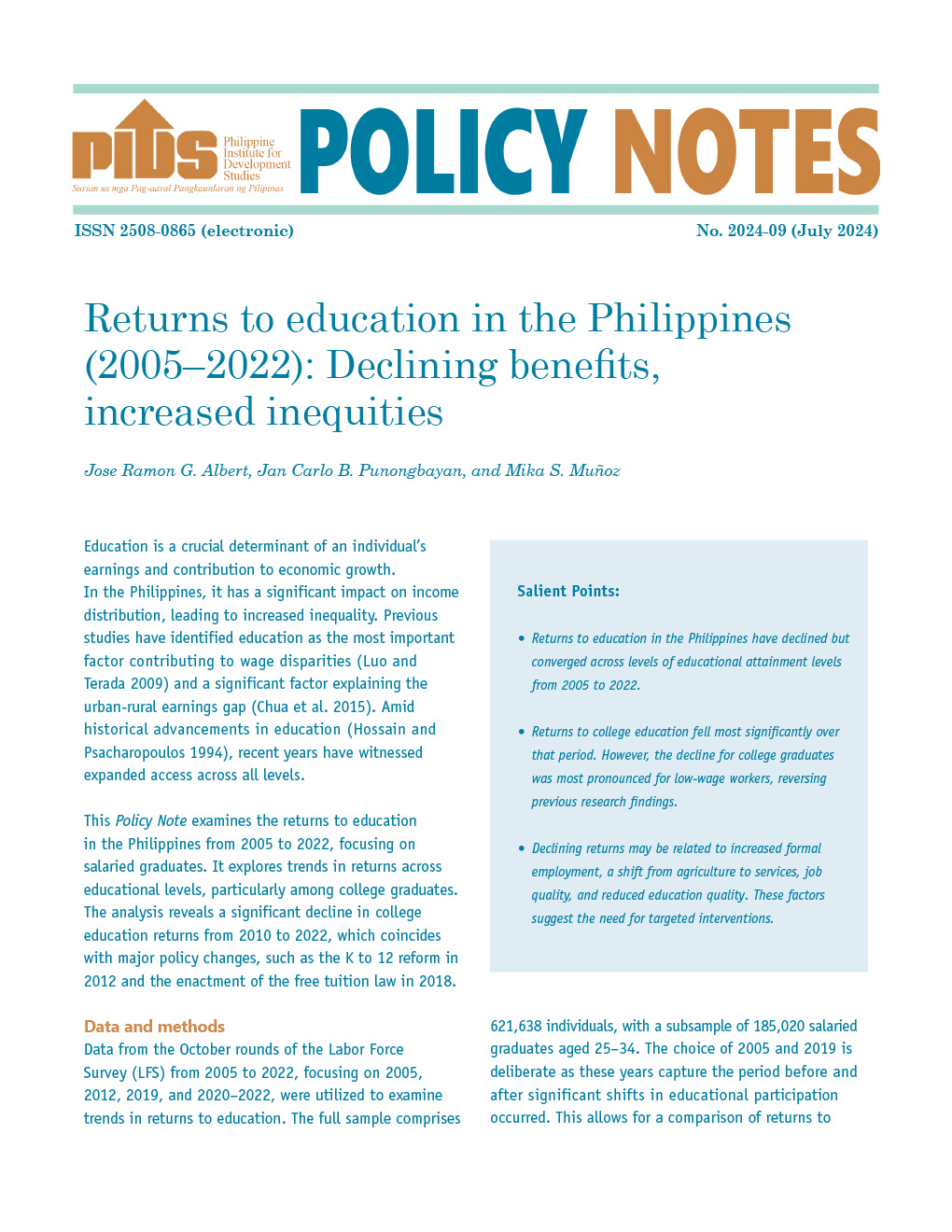HIGH rice prices have caused infants in the country to be introduced to other food sources earlier, a study released by the Philippine Institute for Development Studies (PIDS) said.
In a study, titled Who Weans with Commodity Price Shocks? Rice Prices and Breastfeeding in the Philippines, PIDS research specialist Michael RM Abrigo said high rice prices caused reductions in household’s real income.
If rice prices are high, hunger increases and causes the health of Filipinos, especially breast-feeding mothers, to deteriorate.
“While we find no evidence that infants from agricultural households are completely weaned earlier or later because of rice-price shocks, we see they are introduced to other food sources earlier by about eight days for every one standard-deviation increase in rice prices at birth,” Abrigo said. “Infants from nonagricultural households are, likewise, introduced earlier to other food sources by about five days for every one standard deviation increase in rice prices at birth.”
In general, the study stated, an increase in rice prices results in lower consumption. This is due to lower real incomes and substitution of common food items with cheaper alternatives.
However, in the case of rice, the country’s staple, it has “no close substitute in the local diet.” This causes households, especially among the poor, to go hungry.
For breast-feeding mothers, this means not being able to produce enough milk for infants. It also means they need to work to supplement the family income.
Working mothers now have to stop breast-feeding and introduce their infants to other food sources to prevent them from going hungry.
This is also the case even among agriculture-based households, despite the misconception that when rice prices are high, farm-based households see their incomes rise.
The study stated net-crop producers declined to 47 percent by 2009, from 62 percent in 1991. With this, more than three-quarters of Filipino households are considered net consumers.
Being net consumers, these households are usually the ones negatively affected by higher prices.
“With rice inflation going above 50 percent during the 1995 and 2008 crises, the net benefit ratio distribution implies that about a third of all households in the Philippines experienced at least 10-percent reduction in real income,” Abrigo said.//
In a study, titled Who Weans with Commodity Price Shocks? Rice Prices and Breastfeeding in the Philippines, PIDS research specialist Michael RM Abrigo said high rice prices caused reductions in household’s real income.
If rice prices are high, hunger increases and causes the health of Filipinos, especially breast-feeding mothers, to deteriorate.
“While we find no evidence that infants from agricultural households are completely weaned earlier or later because of rice-price shocks, we see they are introduced to other food sources earlier by about eight days for every one standard-deviation increase in rice prices at birth,” Abrigo said. “Infants from nonagricultural households are, likewise, introduced earlier to other food sources by about five days for every one standard deviation increase in rice prices at birth.”
In general, the study stated, an increase in rice prices results in lower consumption. This is due to lower real incomes and substitution of common food items with cheaper alternatives.
However, in the case of rice, the country’s staple, it has “no close substitute in the local diet.” This causes households, especially among the poor, to go hungry.
For breast-feeding mothers, this means not being able to produce enough milk for infants. It also means they need to work to supplement the family income.
Working mothers now have to stop breast-feeding and introduce their infants to other food sources to prevent them from going hungry.
This is also the case even among agriculture-based households, despite the misconception that when rice prices are high, farm-based households see their incomes rise.
The study stated net-crop producers declined to 47 percent by 2009, from 62 percent in 1991. With this, more than three-quarters of Filipino households are considered net consumers.
Being net consumers, these households are usually the ones negatively affected by higher prices.
“With rice inflation going above 50 percent during the 1995 and 2008 crises, the net benefit ratio distribution implies that about a third of all households in the Philippines experienced at least 10-percent reduction in real income,” Abrigo said.//











